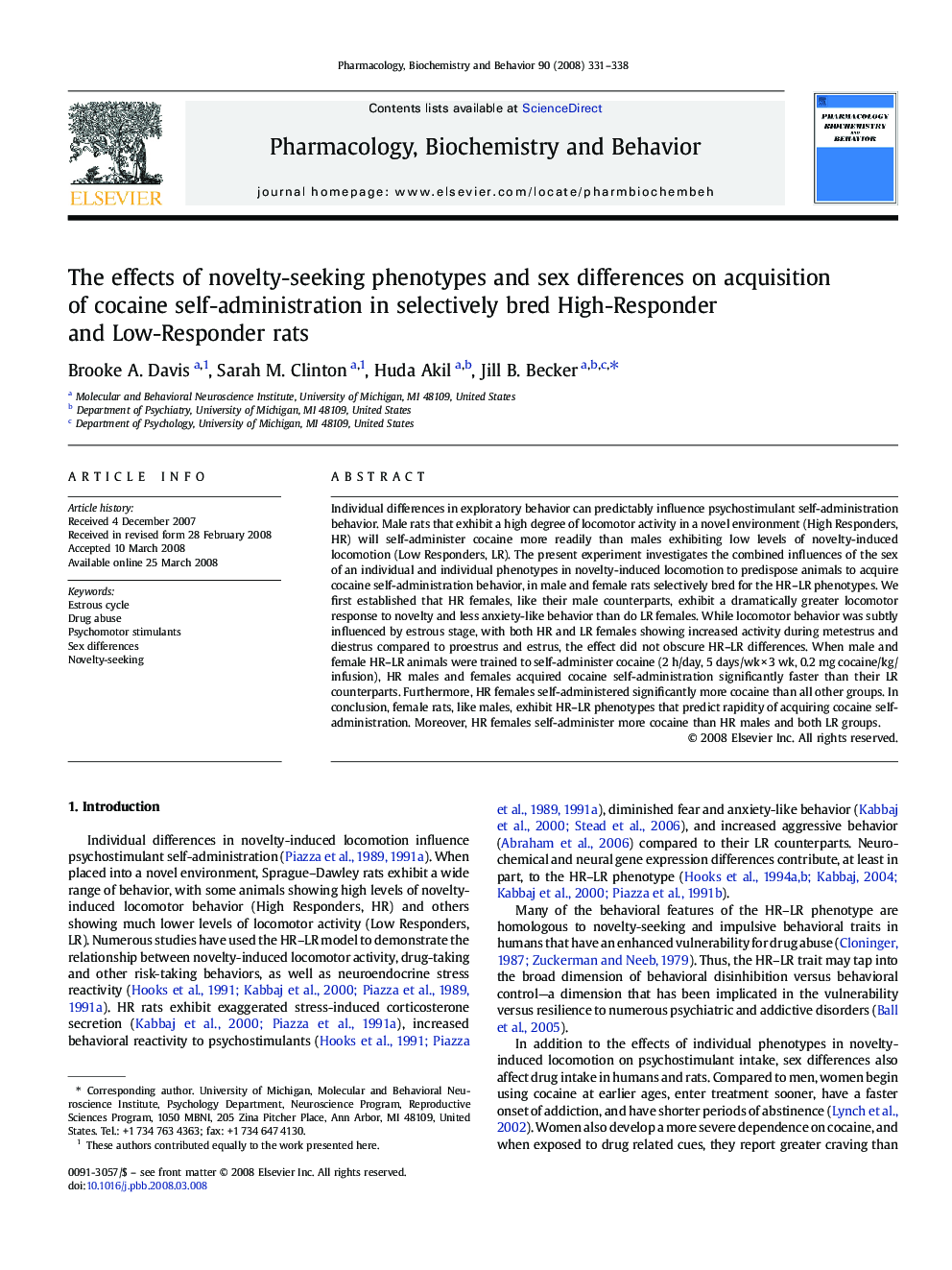| Article ID | Journal | Published Year | Pages | File Type |
|---|---|---|---|---|
| 2013891 | Pharmacology Biochemistry and Behavior | 2008 | 8 Pages |
Abstract
Individual differences in exploratory behavior can predictably influence psychostimulant self-administration behavior. Male rats that exhibit a high degree of locomotor activity in a novel environment (High Responders, HR) will self-administer cocaine more readily than males exhibiting low levels of novelty-induced locomotion (Low Responders, LR). The present experiment investigates the combined influences of the sex of an individual and individual phenotypes in novelty-induced locomotion to predispose animals to acquire cocaine self-administration behavior, in male and female rats selectively bred for the HR-LR phenotypes. We first established that HR females, like their male counterparts, exhibit a dramatically greater locomotor response to novelty and less anxiety-like behavior than do LR females. While locomotor behavior was subtly influenced by estrous stage, with both HR and LR females showing increased activity during metestrus and diestrus compared to proestrus and estrus, the effect did not obscure HR-LR differences. When male and female HR-LR animals were trained to self-administer cocaine (2 h/day, 5 days/wk Ã 3 wk, 0.2 mg cocaine/kg/infusion), HR males and females acquired cocaine self-administration significantly faster than their LR counterparts. Furthermore, HR females self-administered significantly more cocaine than all other groups. In conclusion, female rats, like males, exhibit HR-LR phenotypes that predict rapidity of acquiring cocaine self-administration. Moreover, HR females self-administer more cocaine than HR males and both LR groups.
Related Topics
Life Sciences
Biochemistry, Genetics and Molecular Biology
Biochemistry
Authors
Brooke A. Davis, Sarah M. Clinton, Huda Akil, Jill B. Becker,
